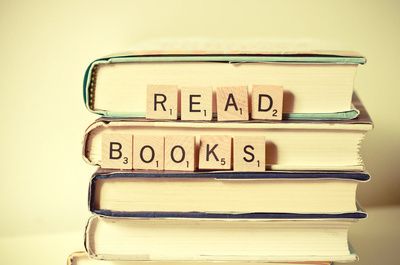
Introduction
Have you ever felt the magic of being completely absorbed in a story or the thrill of learning something new from a book? Reading is more than a hobby; it is a key to unlocking new worlds, gaining wisdom, and broadening your horizons. Whether it’s a novel that takes you to a distant land or a biography that inspires you, books have the power to change your life.
Benefits of Reading Books
1. Enhances Vocabulary and Communication Skills
When you read regularly, you encounter words and phrases that expand your vocabulary. This not only improves your ability to express yourself but also helps you communicate more effectively in personal and professional settings.
2. Boosts Mental Health and Reduces Stress
Diving into a good book can act as a form of escapism, allowing you to relax and recharge. Studies have shown that just six minutes of reading can reduce stress levels significantly.
3. Develops Critical Thinking and Problem-Solving Skills
Books, especially non-fiction and thought-provoking fiction, challenge your perspectives and encourage you to think deeply. This fosters critical thinking and equips you to approach real-life problems more effectively.
4. Fosters Creativity and Imagination
Reading fiction stimulates your imagination by creating vivid worlds and characters in your mind. It’s like exercising your brain’s creative muscles.
How to Develop a Reading Habit
1. Set Clear Goals for Reading
Start small. Commit to reading one book a month or a specific number of pages each day. Setting realistic goals keeps you motivated.
2. Choose the Right Books for Your Interests
Explore genres and authors that resonate with your personality and preferences. This keeps you engaged and excited to read.
3. Allocate Specific Time for Reading
Make reading a part of your daily routine. Whether it’s 15 minutes before bed or an hour during your lunch break, consistency is key.
4. Use Technology Like E-Books and Audiobooks
Platforms like Kindle and Audible make reading accessible anytime, anywhere. These options are great for multitaskers or those with busy schedules.
Overcoming Challenges in Reading
1. Dealing with Distractions
Create a distraction-free reading environment. Turn off notifications and let yourself immerse in the book.
2. Overcoming the Fear of Dense or Complex Books
Break down challenging books into smaller sections and approach them at your own pace. Remember, progress is more important than speed.
Fiction vs. Non-Fiction: Which Should You Read?
1. Advantages of Reading Fiction
Fiction allows you to explore diverse cultures, emotions, and perspectives. It also enhances empathy by putting you in the shoes of various characters.
2. Benefits of Non-Fiction
Non-fiction books are a goldmine of knowledge and real-life lessons. They help you develop new skills, stay informed, and grow as a person.
Popular Genres to Explore
1. Mystery and Thriller
For those who enjoy suspense and twists, mystery novels are a thrilling escape.
2. Fantasy and Science Fiction
These genres transport you to imaginative worlds, offering endless possibilities for exploration.
3. Self-Help and Motivational Books
Looking to improve yourself? These books provide actionable insights and inspiration.
Tips for Active Reading
1. Taking Notes and Annotating
Highlight key points and jot down thoughts. This enhances comprehension and retention.
2. Joining Book Clubs and Discussions
Engaging with fellow readers helps you discover new perspectives and deepen your understanding of the book.
3. Using Tools Like Reading Journals
Maintain a journal to record your reflections and favorite quotes from books.
How Reading Books Helps with Professional Growth
Reading is not just for leisure; it can boost your career too. Books on leadership, productivity, and industry trends help you stay ahead professionally.
Must-Read Books for Every Reader
- Fiction Classics: Pride and Prejudice by Jane Austen, The Great Gatsby by F. Scott Fitzgerald
- Transformative Non-Fiction: The Power of Habit by Charles Duhigg, Thinking, Fast and Slow by Daniel Kahneman
Creating a Personalized Reading List
1. How to Build a Diverse Selection
Include a mix of genres and authors to expand your horizons.
2. Mixing Light and Heavy Reads
Balance challenging books with lighter, more entertaining reads to keep the joy alive.
Conclusion
Reading books is a lifelong journey of discovery and growth. Whether you’re looking to relax, learn, or escape, there’s a book out there for you. Start small, be consistent, and explore a variety of genres to make reading a fulfilling habit.
FAQs
1. What is the best time to read during the day?
The best time is whenever you can focus. Morning, lunch breaks, or before bed are great options.
2. How many books should I aim to read in a year?
Start with a realistic goal, such as 12 books per year, and gradually increase it.
3. Are e-books better than physical books?
It depends on your preference. E-books are portable, but physical books offer a tactile experience.
4. Can audiobooks replace traditional reading?
Audiobooks are convenient, but traditional reading often helps with deeper comprehension.
5. What are some tips for reading faster without losing comprehension?
Practice skimming, focus on key points, and avoid sub vocalization to improve speed.